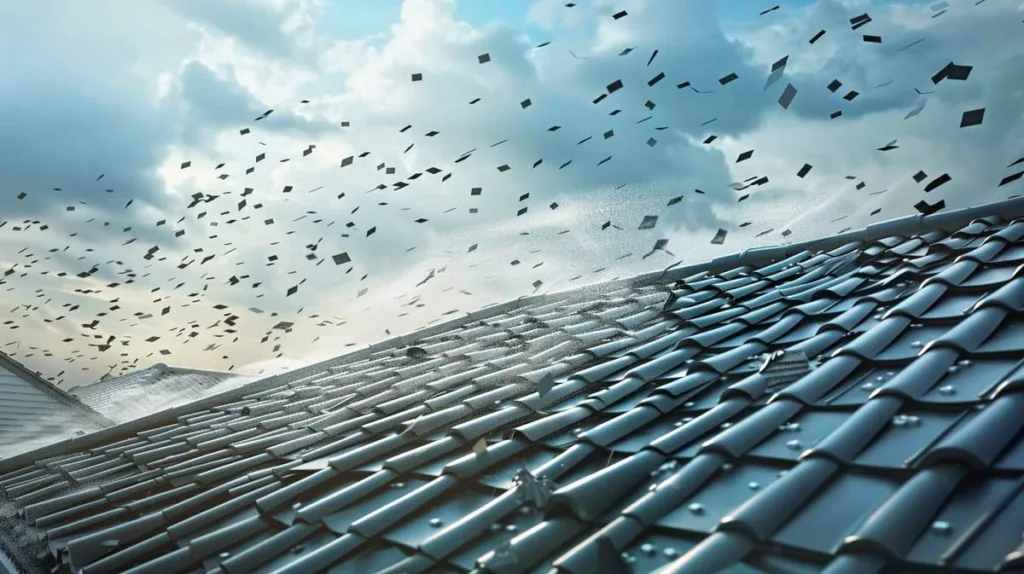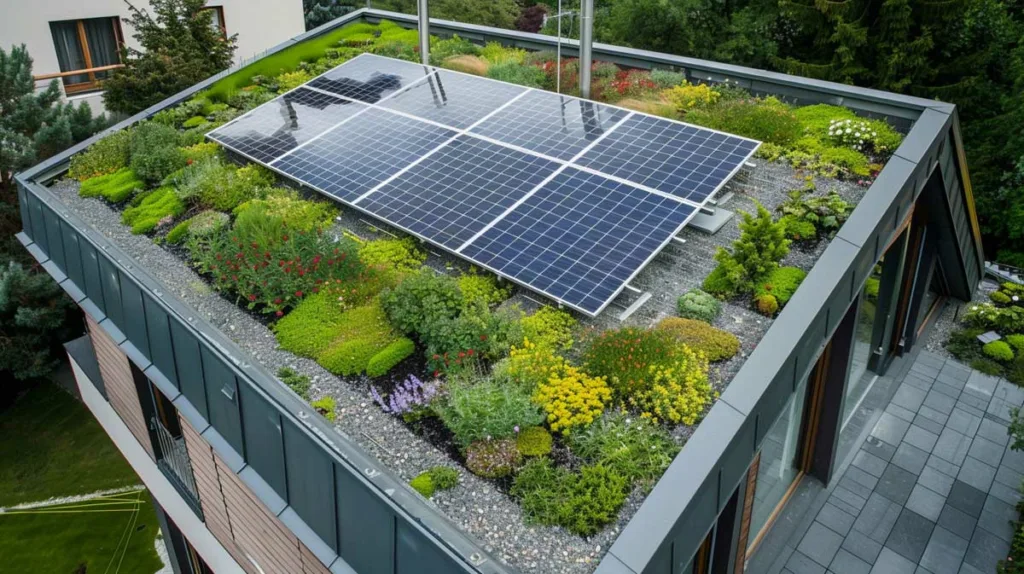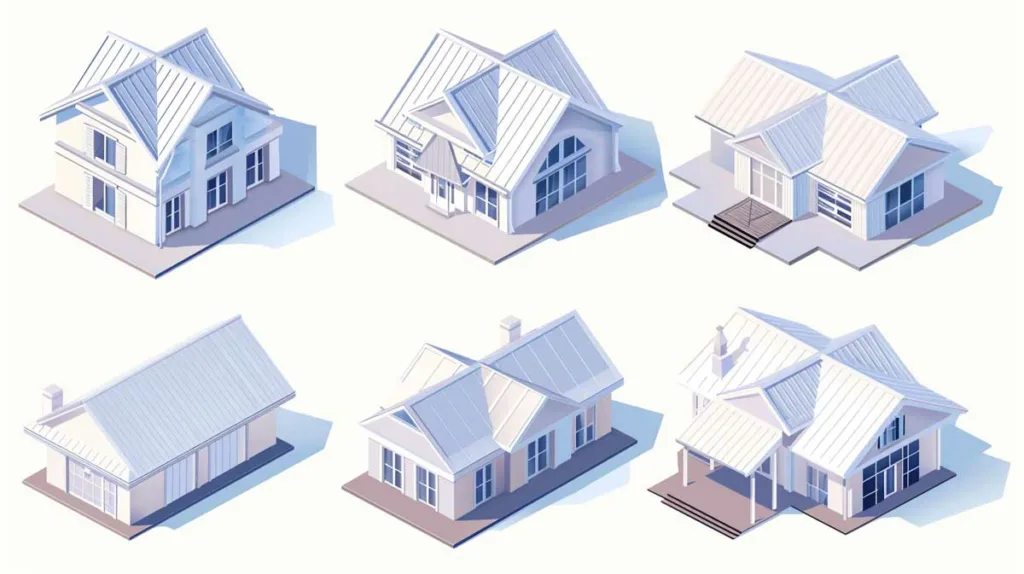For businesses looking at practical roofing solutions, PVC roofing offers longevity, weather resilience, and ease of maintenance. This article delves into what makes PVC roofing an intelligent choice for commercial buildings, focusing on its performance in extreme weather conditions, energy cost savings, and adaptability to different architectural needs.
Key Takeaways
- PVC roofing systems feature robust polyvinyl chloride membranes, heat-welded seams, and versatile installation techniques tailored to various architectural demands. They promise exceptional durability and flexibility.
- Proven performance in extreme weather conditions—like high winds and heavy rains—is a hallmark of PVC roofing, which can offer energy efficiencies like UV reflection and reduce heat absorption to cool building interiors and lower energy costs.
- Aside from its practical benefits, PVC roofing supports environmental efforts by using recyclable materials and integrating solar panels. It also requires regular maintenance to ensure longevity and peak performance.
The Anatomy of a PVC Roofing System
At the heart of its steadfast durability and impressive longevity lies the anatomy of a PVC roofing system, a testament to the roofing industry’s innovative spirit. This system is not just a material layer; it’s a carefully engineered solution designed to tackle the harshest weather conditions, provide energy-saving benefits, and offer a flexible fit for various architectural styles.
From its robust polyvinyl chloride membrane to its heat-welded seams and versatile installation techniques, a PVC roof is more than the sum of its parts—it’s a guardian for your building.
Polyvinyl Chloride Membrane
Polyvinyl chloride, or PVC, is a chameleon in the world of plastics. It can transform from a rigid construction staple to a pliable roofing marvel. This versatile material, a natural gas-derived ethylene and salt-based chlorine blend, boasts impressive strength and flexibility. It is ideal for roofing applications where adaptability and resilience are essential.
The advanced-formula PVC membrane, a top-notch roofing material tailored for rooftops, stands as a bulwark against the elements, ensuring your building stays dry and secure for decades.
Heat Welded Seams
The integrity of a PVC roof is fortified by its heat-welded seams, a feat of construction that fuses individual membrane sheets into a seamless, watertight blanket. These seams are not just strong; they are some of the most resilient components of the roofing system, capable of withstanding high winds and extreme thermal variations without faltering.
Even if a seam were to be compromised, the marvel of PVC technology allows for seamless repairs. A hot-air gun can reseal the bond, restoring the roof’s impenetrable fortress.
Installation Techniques
Whether rolled out over a sprawling commercial complex or tailored to a quaint suburban home, PVC roofing’s installation techniques are as varied as the buildings they protect. Some common installation methods for PVC roofing include:
- Mechanically fastened system: This method uses screws or nails to secure the PVC membrane to the roof deck. It is a mechanically attached stronghold against moderate winds.
- Fully adhered system: This method glues The PVC membrane directly to the roof deck. It offers the pinnacle of stability and is often used in high-wind zones.
- Loose-laying under green roofs: This method involves loosely laying the PVC membrane under a green roof system, providing waterproofing and protection.
- Ballasting: This method uses heavy objects like gravel or pavers to hold the PVC membrane in place. It is commonly used on flat roofs.
These different installation methods allow PVC roofing to adapt to each project’s unique demands and design aspirations.
Proven Performance in Extreme Weather

When the skies darken, and the winds howl, PVC roofing stands its ground. Its proven performance in extreme weather is not a claim; it’s a fact backed by decades of resilience against high winds, relentless rains, and the unyielding sun. With a track record of weathering storms that would ravage lesser materials, PVC roofing systems have carved their place in the pantheon of durable building products, often surpassing the 20-year mark and sometimes even reaching the 30-year milestone.
Resistance to High Winds
Like a tree bending in a storm, PVC roofing’s flexibility is its strength. This flexibility allows it to dance with the wind rather than resist it, providing a level of wind resistance that keeps the roof intact even during the most ferocious gales. This resilience makes PVC roofs a safe harbor, ensuring that the only thing blowing away is the competition.
Managing Ponding Water
Ponding water is the nemesis of any rooftop, but for PVC roofs, it’s a battle easily won with proper installation and diligent maintenance. Ignored, pooling water can be a harbinger of structural woes, but with the vigilant eye of routine inspections, potential drainage issues or slope problems are identified and rectified before they can cause harm.
This proactive approach to maintenance keeps PVC roofing systems functioning flawlessly, even when the clouds open up and the rain pours down.
Enhancing Energy Efficiency with PVC Roofs

Sitting atop your building, a PVC roof does more than shelter; it is a sentinel of sustainability, reflecting UV rays and minimizing heat absorption. This energy efficiency is a hallmark of PVC roofing materials, offering a reprieve from soaring summer temperatures and keeping interior spaces comfortably cool.
It’s a flat roof that pays dividends, reducing the reliance on air conditioning and contributing to a greener, more cost-effective building operation.
Cool Roof Technology
Cool roof technology and PVC roofing are a match made in heaven. The benefits of PVC roofs include:
- High solar reflectivity, which bounces back sunlight and keeps buildings cooler than many traditional roofing materials
- Lower internal temperatures, reducing the need for air conditioning, and saving energy
- Slashing energy costs, reducing annual energy bills by as much as 40%
- Meeting cool roof standards, making them an environmentally friendly choice
These benefits are hard to overlook in today’s energy-conscious world.
Cost Savings Over Time
The initial cost of installing a PVC roof may seem like a steep climb, but the view from the top reveals a landscape of savings. The benefits of PVC roofing include:
- Insulating prowess, leading to a reduction in heating and cooling expenses
- High reflectivity, further reducing energy costs
- Long-term savings due to durability and low maintenance requirements
These advantages make PVC roofing a cost-effective choice in the long run.
As energy prices continue to fluctuate, the consistent performance of PVC roofing systems offers a reassuring constant in the ever-changing economic climate.
Versatility Across Construction Types

No matter the project, PVC roofing systems are proving their worth across the construction spectrum. Their versatility allows them to seamlessly adapt to commercial, industrial, and residential buildings, providing each with a tailored solution that stands the test of time.
The robustness of PVC roofing, immune to the onslaught of UV rays, chemicals, and even fire, has made it a versatile and reliable choice for architects and building owners alike.
Commercial Building Applications
Commercial enterprises seeking a roofing system for their commercial buildings that balances aesthetics with exceptional performance need look no further than PVC. These roofs endure for over 30 years and offer cost-effective installation and straightforward repairs, making them a prudent investment for any business.
The visual appeal of PVC roofing, which can be customized to enhance the building’s envelope, is a bonus that doesn’t compromise its protective capabilities.
Industrial Facilities
Industrial landscapes are often harsh, but PVC roofing is up to the challenge. Its chemical resistance makes it a stalwart guardian for factories and plants where exposure to aggressive substances is daily. This resilience has cemented PVC roofing’s reputation as a reliable and durable solution for industrial settings, providing peace of mind where it matters most.
Residential Solutions
For homeowners, the allure of PVC roofing lies in its:
- Longevity and low maintenance requirements
- Ability to shield a home for more than 20 years, providing protection and cost savings
- Energy efficiency due to its high reflectivity
- Resistance to mold and algae
- Ease of repair when damaged
These qualities make PVC roofing a top pick for those looking to safeguard their abode with minimal fuss.
Customizing Your PVC Roof: Accessories and Enhancements

Your PVC roofing system can be as unique as your building, with accessories and enhancements that allow for a personalized touch. Walkway pads protect your investment from foot traffic, while various decorative options can improve the roof’s aesthetic appeal, making it a statement piece as much as a practical installment.
Integration with Solar Panels
The fusion of PVC roofing and solar technology is a testament to the forward-thinking nature of modern construction. This synergy elevates your building’s energy efficiency through the reflective qualities of the roof itself and by harnessing the sun’s power for a truly sustainable solution.
Aesthetic and Functional Accessories
Beyond functionality, PVC roofing offers the following benefits:
- It caters to the aesthetic aspirations of property owners
- It comes in an array of colors and styles, allowing for customization to complement the building’s design
- Functional accessories like the Sarnafil® Decor Profile can add a touch of elegance to the roofing system’s practicality.
Addressing Common Misconceptions About PVC Roofing
Despite its many virtues, misconceptions about PVC roofing persist. It’s time to clear the air: while PVC production does involve fossil fuels, the material’s recyclability and long lifespan offset these concerns, making it an environmentally sound choice for those looking to build responsibly.
Environmental Impact and Recycling
A PVC roof’s journey doesn’t end on its last day of service. These materials are stepping stones in the industry’s efforts to minimize waste, with recycling programs turning old roofs into new resources.
This commitment to sustainability reshapes perceptions, confirming PVC roofing’s place as a responsible building material.
Temperature Adaptability
PVC roofing demonstrates an impressive ability to adapt to varying temperatures, maintaining comfort while enduring the extremes outside. However, it’s important to recognize the material’s limits; extreme cold can challenge the roof’s integrity, emphasizing the need for proper installation and maintenance to ensure long-term performance.
Maintenance and Care for Your PVC Roof
The secret to a PVC roof’s long life is not just in its material but also in the care it receives. Regular maintenance, including biannual inspections and cleaning, ensures that your roof remains in peak condition, ready to face whatever the skies may bring.
Routine Inspections
Neglect is the nemesis of any roofing system, and PVC roofs are no exception. Routine inspections are the first line of defense, catching minor issues before they escalate into significant problems and ensuring that every seam and flashing is ready to face the elements.
Repair Strategies
When damage does occur, the proper repair strategies make all the difference. Hot-air welding can seamlessly mend seams, while adhesives and sealants formulated for PVC provide durable fixes for more significant issues. For those in harsh winter climates, temporary patches offer interim protection until the thaw allows for more permanent solutions.
Summary
As we end our discussion about PVC roofing, it is evident that this material offers a powerful combination of durability, energy efficiency, and versatility, making it a wise choice for any building project. Whether you’re constructing a new commercial complex, retrofitting an industrial facility, or protecting your home, PVC roofing is a testament to the industry’s innovation. With its ability to adapt to extreme weather conditions, cost-saving benefits over time, and customizable options, PVC roofing meets and exceeds modern construction demands. If you’re looking for a reliable contractor to install PVC roofing for your building, consider contacting ID Flat Roof, 234 West Newton St #2, Boston, MA 02116. They can help you get the job done organically. In addition, if you want to improve your online visibility and reach potential customers, Alex Kazakov can help you with his expertise in digital marketing. He can assist you in starting Google ADS, Facebook ADS, and other online marketing strategies to increase your company’s online presence and generate more leads. Contact Alex Kazakov to learn more about their services and how they can help you achieve your business goals.

